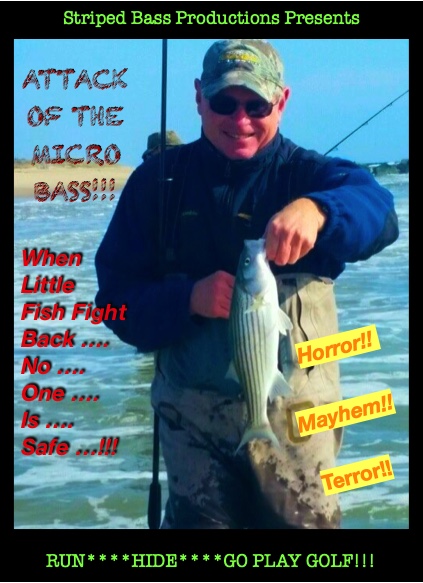
They were everywhere: East Hampton ocean beaches, Fort Pond Bay, Shagwong Point, Oyster Pond Cove, White Sands. From Montauk in the east to Jones Beach in the west. And everyone — newbie googans to veteran sharpies — was inundated with them. Verizon Charlie had 157 of them in about 6 sessions over two early November weekends. In Sandy Hook, NJ, UPS Richie had 26 of them on a recent Wednesday, then another 49 the following day.
We’re talking about shorts, schoolies, throw-backs; stripers in diapers. Less politely rats or dinks*. These are small, young striped bass you cannot keep; you can only catch and release them (full disclosure: most of the folks I fish with do that anyway, regardless of size. But neither do they cook). If this season was a movie it could easily be a horror flick titled “Attack of the Micro-Bass!”
When the Georgica Cut in Wainscott was cleaved open in early November, it seemed like the recess bell rang at a striped bass nursery school. Juvie fish were in the wash, literally swimming between our legs at times. They took swimming lures, bottom lures, teaser flies, you name it. We caught them on the incoming, the outgoing, the bottom and the top of the tides. Daytime, night time. No relief. But no keepers.
A keeper is a striped bass 28 inches or longer. The size rule is designed to make sure the young survive to propagate for the future. From the surf or from a boat, you only get to take home one keeper bass per day, if you’re fortunate enough to land one. But short bass all have to go back to swim another day.
So this a good thing, sustaining the fishery for the future, right? Sure; “if you like small fish,” quipped one of The Faithful. I have nothing against catching little fish, except for one very important matter. If not a legal keeper, I can’t bring a striper home to put a meal on the table. Thus far this season, I’ve had exactly zero keepers. And in the absence of any bluefish run (that’s a whole other mystery), there’s been a lot of roast chicken and clam chowder gracing my table this fall. My fish smoker is rusting from lack of use.
A lot of my friends and readers are beginning to weary of my whining this fall season. Hey, so am I! Fact is, no one really knows why boaters from Maryland to Cape Cod are slamming 20 and 30 pound fish with regularity since the summer, while keeper bass have clearly turned into an endangered species for surfcasters. There’s no shortage of theories: water too warm, weather too mild, too many storms, Hurricane Sandy altered the shoreline structure. There’s too much bait, there’s not enough bait. And on and on.
Pick your poison, but one thing is for sure: short bass is a trend. And I can’t merely attribute it up to how badly I suck as a fisherman, because I am not alone. Among my closest fishing companions, perhaps a couple of handful of keepers were caught the entire season. Nine that Billy Black nailed one early September evening accounted for the bulk of these. Beyond that happy anomaly, folks who could rightly be called experienced sharpies have been stymied as badly or nearly as much as me.
It wasn’t always thus (Okay, boomer. Here comes the part about the good old days). In 2011, the world’s record striped bass was caught: 81.8 pounds of trophy fish, boated in the Long Island Sound waters off of Connecticut. That fish surpassed the previous record holder, a 78.8 pound striper caught by a surfcaster from an Atlantic City NJ beach jetty on a stormy September night in 1982.
The keeper count on Striperonline is an ideal example. For the 2018 season (this season is technically not yet over), out of 59 striped bass caught, only one was a keeper. In 2017, it was one out of 21. In 2016, a very prolific year, 65 of 136 bass were keepers. And in 2011, while the total catch was smaller, the keeper yield was huge: 57 out of 67. For the record, Striperonline releases ALL fish.
In my case, the trend line has been equally dismal, though my fishing time and record keeping is not nearly as frequent or accurate. I had about a dozen keepers in 2016, a handful in 2017, 3 in 2018, and, as previously noted, a goose egg thus far in 2019.
But, I guess it remains to be said that it ain’t over until it is over. The striped bass season in New York officially ends on Dec. 15. Although the fat lady typically sings for me the weekend of Thanksgiving, I have indeed caught keeper bass in early December. So there’s hope, perhaps? Yeah, like a pink pony under my Christmas tree.
if you have no better way to spend your Christmas holiday, it’s still legal to catch and release fish that may hang around even into the early days of winter. And since the fish then will likely not be any larger than the ones we’re seeing now, you’ll hardly notice the difference so long as your fingers don’t freeze.
*Here’s my litany for the many names of different sized striped bass.
SIZE MATTERS
RATS or DINKS: Fish that are 12 inches or smaller. More lovingly called micro-bass, juvies or, laughingly, stripers-in-diapers. These fish are only a year old.
SHORTS: The entire class of fish smaller than 28 inches, but generally reserved for those 18 inches or better. Two to 4 year old fish.
SCHOOLIES: In halcyon days of yore, school bass meant fish of legal size, at or slightly below 10 pounds. Today, it is a term used for short bass that are in the 22 to 26 inch range, and 4 or 5 years old.
LEEBOBS: A term that only this year came into the lexicon. It refers to those fish that are just a smidge shy of legal: a 27 incher or maybe one that’s 26-and-a fraction. Coined because our good surfcasting buddy LeeBob has a special talent for finding and hooking these. Estimated age of these fish is 6 years.
KEEPER: A legal striped bass at minimum 28-inches, perhap slightly larger, usually weighing 8 to 12 pounds and 7 to 9 years of age.
TEEN BASS: Indisputable keeper stripers that are usually well over 30 inches, weigh in at around 15 pounds give or take and are believed to be around 10 years old..
QUALITY FISH: A striper of noteworthy size and weight. Usually in the 20 pound range. These fish will be 36 inches or longer, 11 or 12 years old.
COW BASS: A large and heavy fish of 25 pounds or more. Usually fish of this size are 40-inch long females that are 13 to 15 years old.
TROPHY BASS: From the surf these days, a rarely in a lifetime fish 40 to 50 pounds or larger, which can be nearly five feet long, and be old enough to vote, drink and buy cigarettes.
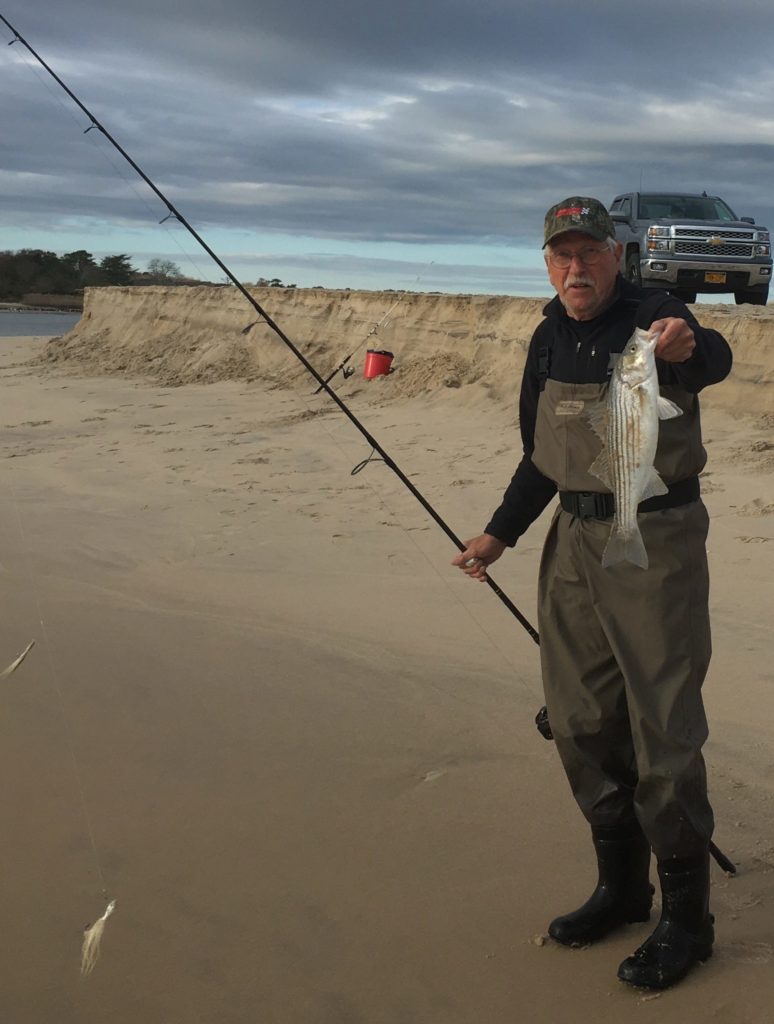

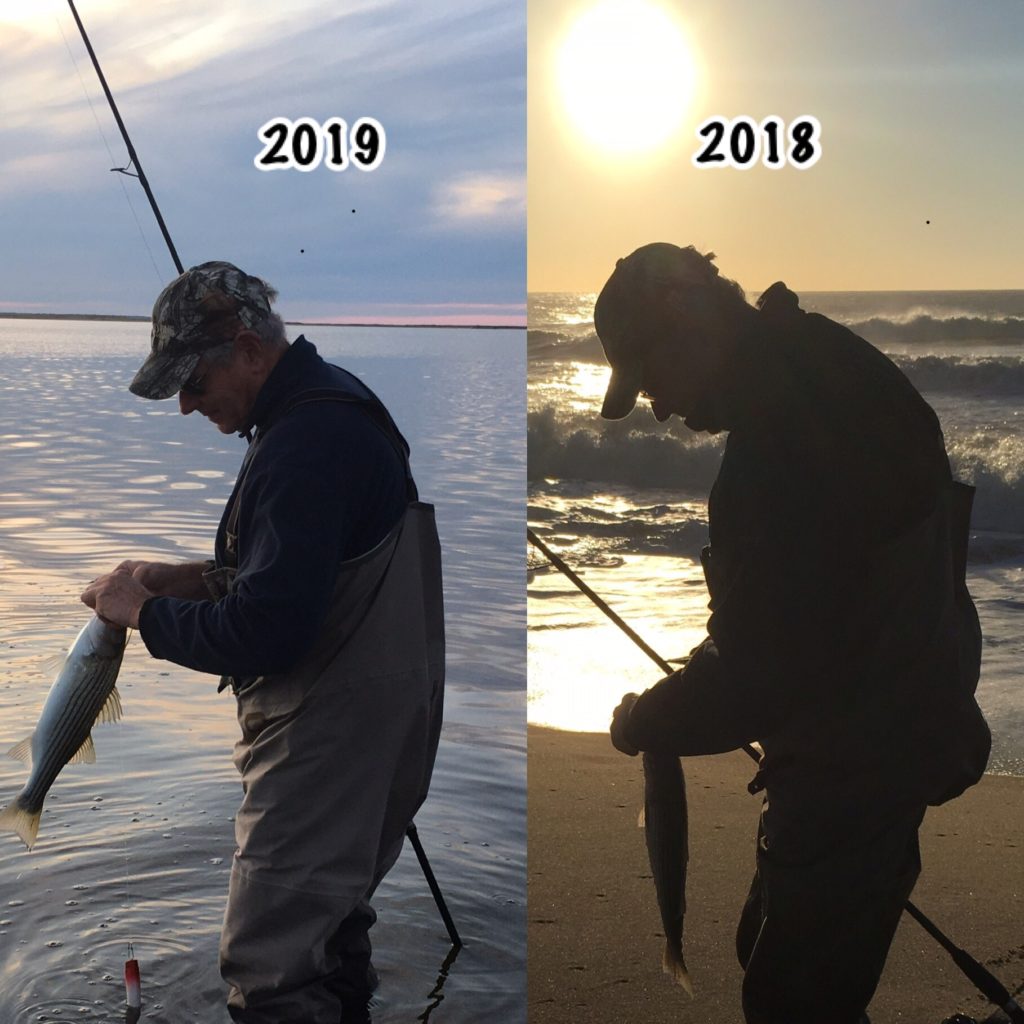
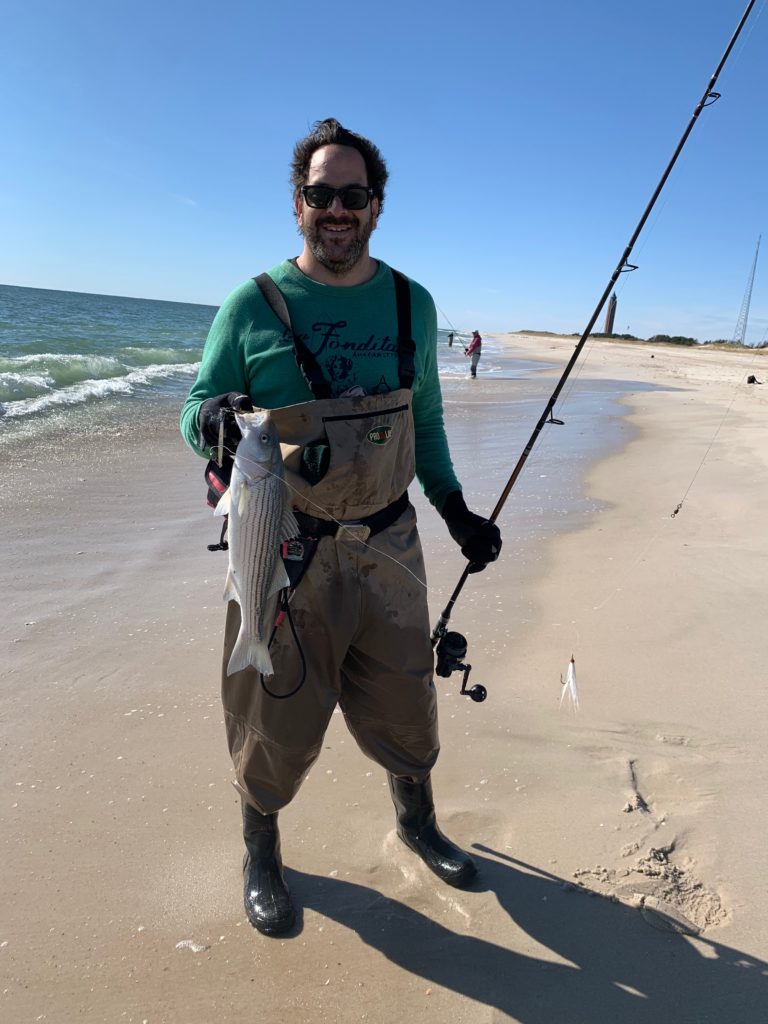
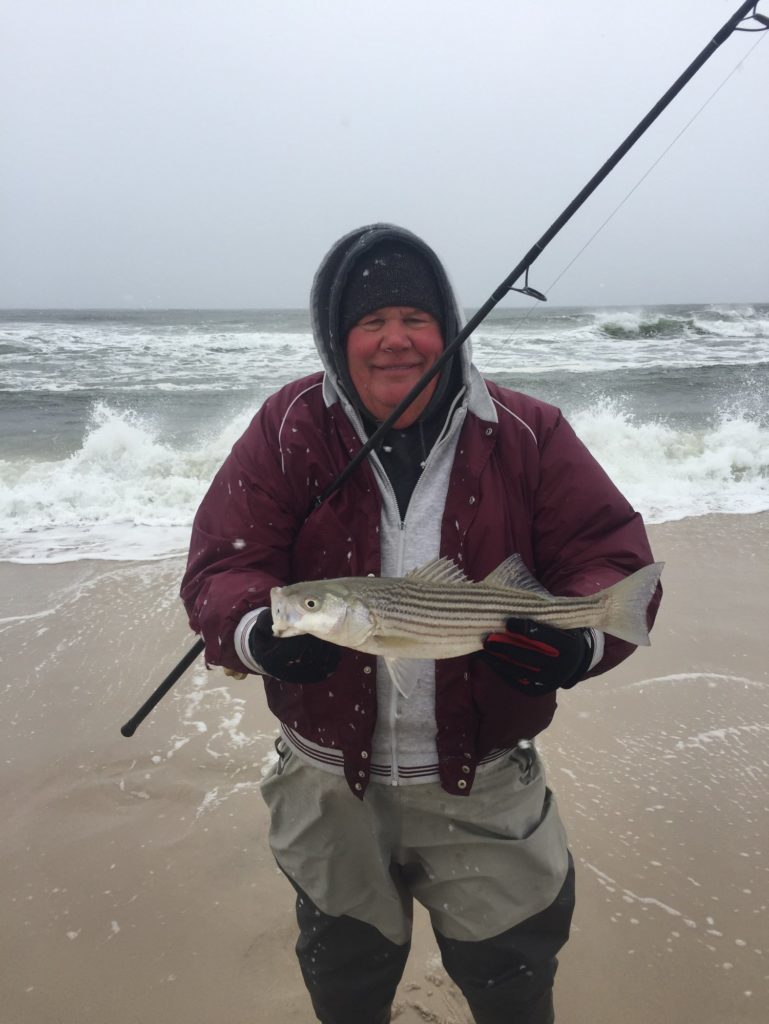
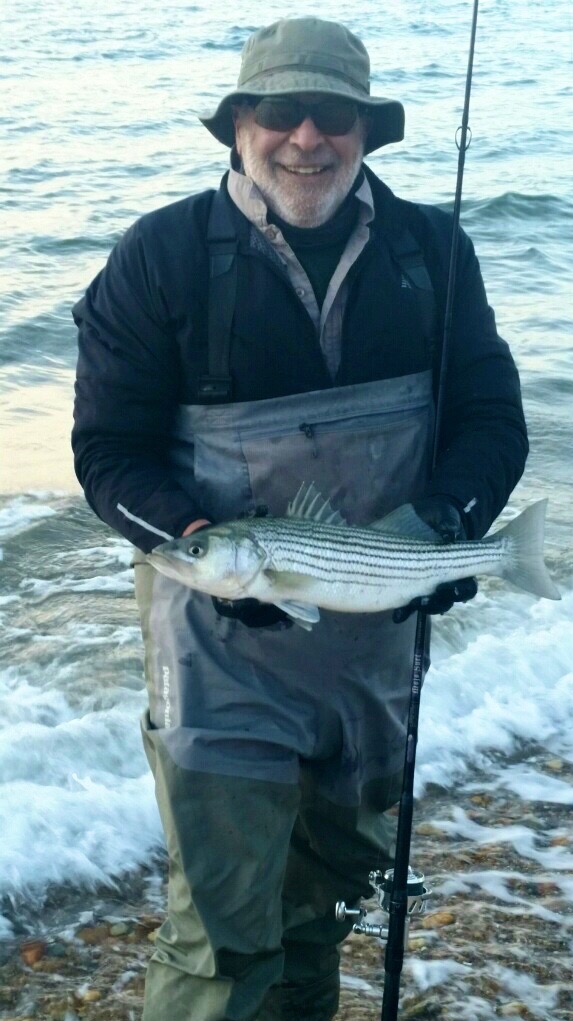

Hi Fred..
Fun and interesting piece…I see it in a local newspaper,Newsday or fishing publication..They would have to include a few photos…
was glad to read that they release the fish that are caught!
See you monday
Thank you. See you Monday. I hope you will be reading! Have a great weekend.